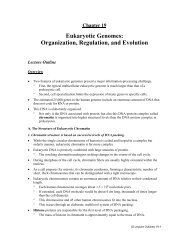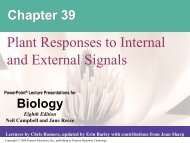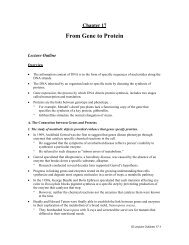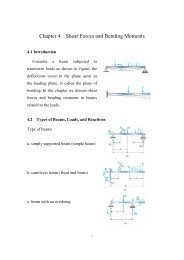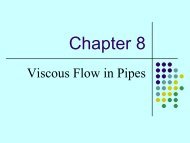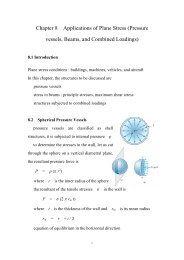8.4 The Natural Response of a Series/Parallel RLC Circuit
8.4 The Natural Response of a Series/Parallel RLC Circuit
8.4 The Natural Response of a Series/Parallel RLC Circuit
- No tags were found...
Create successful ePaper yourself
Turn your PDF publications into a flip-book with our unique Google optimized e-Paper software.
8.5 <strong>The</strong> Step <strong>Response</strong> <strong>of</strong> a <strong>Series</strong>/<strong>Parallel</strong> <strong>RLC</strong><strong>Circuit</strong>(a) Step response <strong>of</strong> a series<strong>RLC</strong> circuitStep 1. Mesh analysis (i=i L )di 1L + Ri+ idt = Vs, t > 0dt C∫Case(i) take derivatived 2i + Rdi + i = 02Ldt dt CC.T. PanSame as natural response but with i(0 + )=I 0+ Vs−IR 0−V0( 0 ) =39d idtL8.5 <strong>The</strong> Step <strong>Response</strong> <strong>of</strong> a <strong>Series</strong>/<strong>Parallel</strong> <strong>RLC</strong><strong>Circuit</strong>Case(ii) use v as unknowndvi = C dt2dv Rdv v V+ + = s2dt Ldt LC LCStep 2. Complete solution = v h +v pph( )v t = VsSt 1 St 2⎧ Ae1+ Ae2overdamped⎪v t A At e critically damped−αt() = ⎨( 1+2 )⎪ −αt( cos + sin )⎩e A1 wtdA2wtdunderdampedC.T. Pan 40





